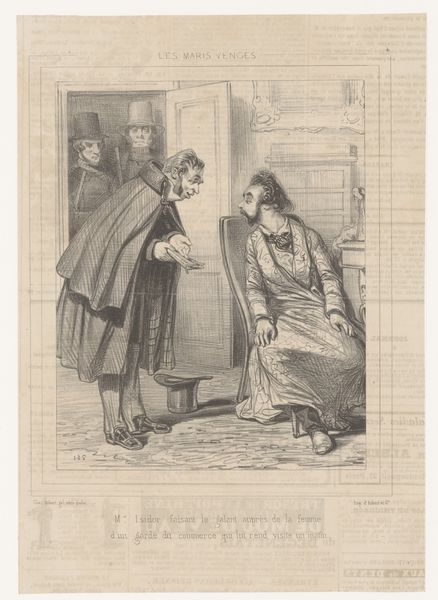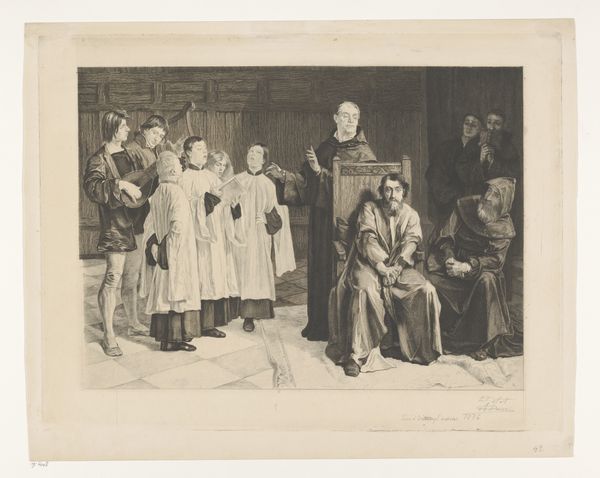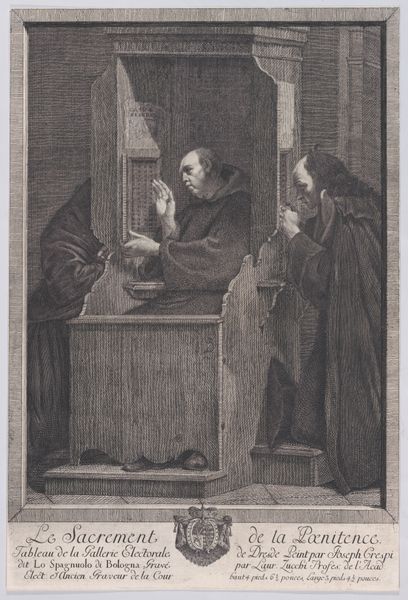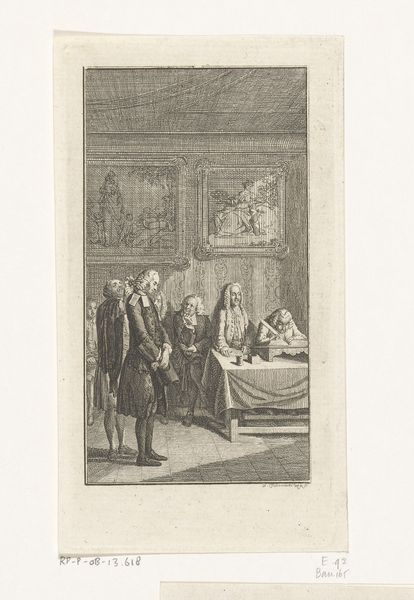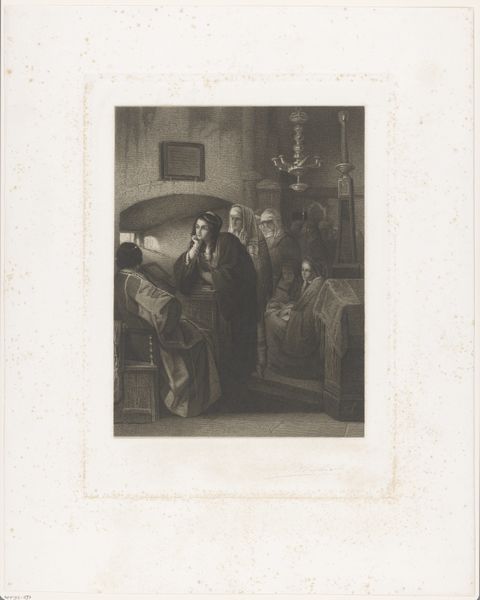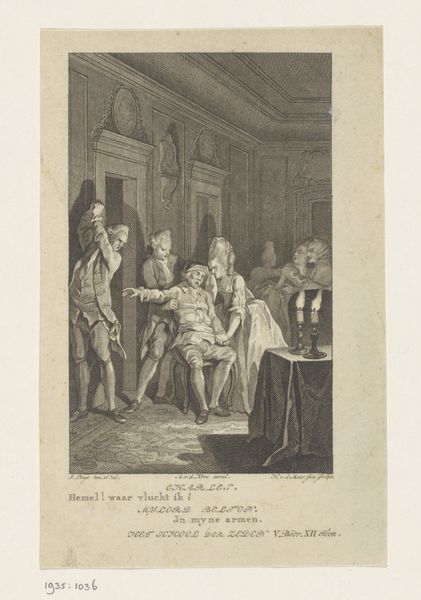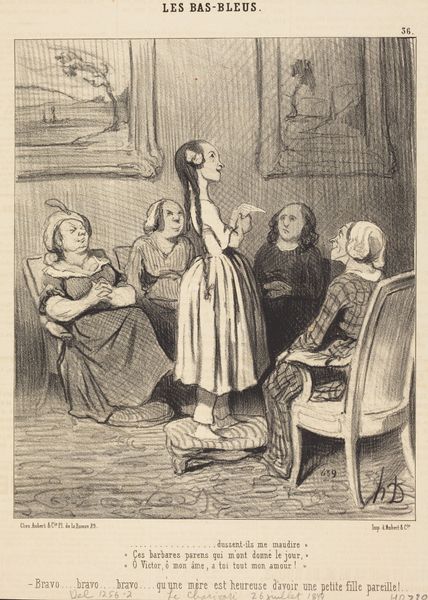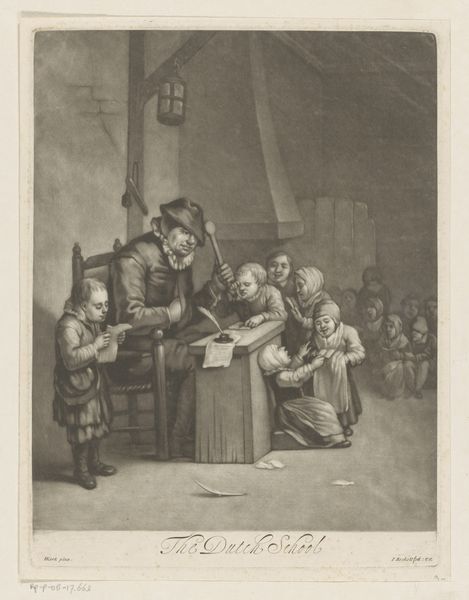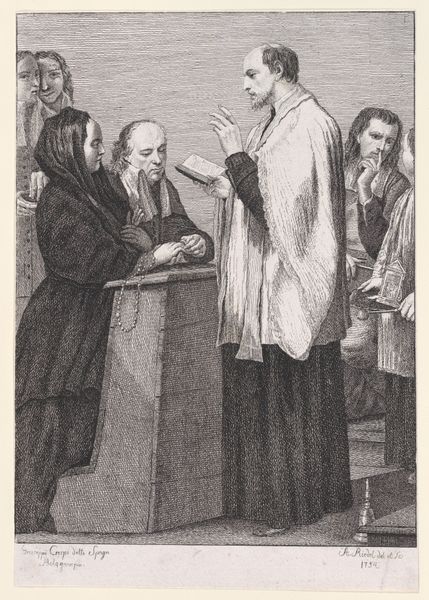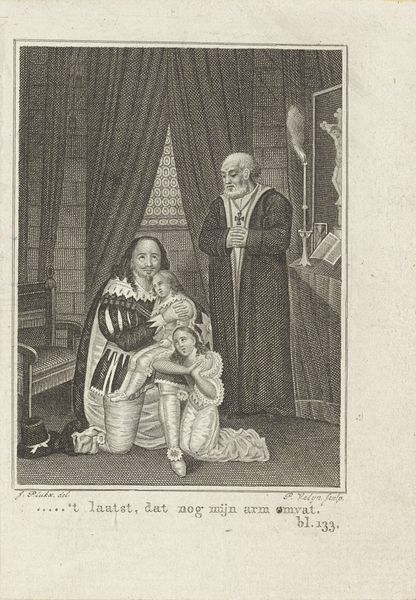
drawing, pencil
#
portrait
#
pencil drawn
#
drawing
#
narrative-art
#
pencil sketch
#
pencil drawing
#
pencil
#
academic-art
#
realism
Dimensions: height 387 mm, width 303 mm
Copyright: Rijks Museum: Open Domain
Curator: Standing before us is "Studie van de rechterhelft van De waanzin van Hugo van der Goes," a drawing from 1875 by Auguste Danse, housed here at the Rijksmuseum. Editor: My initial impression is one of profound melancholy, almost suffocating. The figures are caught in this web of muted tones and shadows, like grief made visible. Curator: It’s interesting you pick up on that feeling, since Danse's work is a study, as the title suggests, a rendering of a section from a larger narrative. It directly references a dramatic historical scene that's all about mental anguish and institutional care. Editor: Ah, I see! So, the tension comes from this sense of a mind unraveling… He's surrounded by figures who seem both concerned and detached, observing his descent as a spectacle? Curator: Precisely. The setting further amplifies this. Note the almost claustrophobic feel. The individuals are enclosed and somewhat pressed against the foreground. Consider, also, that historical asylums weren’t always places of healing but rather sites of confinement. This pencil drawing gives you a lot of detail. Danse must have considered the medium carefully. Editor: Indeed, it amplifies the drawing's raw and unsettling impact. Graphite mimics the tonal complexity, making the somberness sink deeper into the observer’s subconsciousness. Are the surrounding people supposed to be clergy? Their gestures are restrained but noticeable. Curator: They appear to be figures of authority, monks maybe. I want to suggest their garments create these dark oppressive blocks around the seated figure in distress, highlighting how institutions themselves can sometimes contribute to, or at least fail to alleviate, suffering. It seems likely that they want to find a cure for what they think is going wrong in that person. Editor: It all makes sense. This exploration provides an eerie yet beautiful glimpse of the tragic sense of mental instability and the social environment that may or may not offer solace. Curator: I couldn’t agree more, this work really exposes how cultural conceptions shape our treatment of those in vulnerable conditions.
Comments
No comments
Be the first to comment and join the conversation on the ultimate creative platform.
